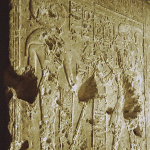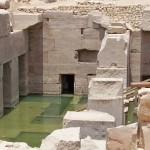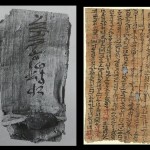Comparison of the stelae of wsrimn (Fisher Collection, Detroit) and of ddwsbk (Louvre C240 and BM566) of Dynasty XII
Abstract
The 12th Dynasty (Middle Egytian) judicial system was surprisingly modern in its approach and composition, but our knowledge is assembled by a process of deduction. Most of the key evidentiary sources are testimonial stelae which list the titles held by senior officials during their lifetimes. The nature of an individual’s role in the judicial process can be postulated from the combination of titles held, in turn allowing a picture of the overall operation of kingly justice to emerge. “The paper considers the titles and history of two such individuals, comparing and contrasting the titles they held to build a picture which reveals the existence of investigative judicial processes. [more…]

Notes on the Goddess Pakhet
In her article on Hatshepsut in the December 2011 edition of the Magazine, Barbara O’Neill mentions the deity Pakhet. The following introduces what little is known about this elusive deity. Pakhet was represented in the form of a woman with a lion’s head (figure 1- click to see the bigger image). She looks very like leonine representations of Sekhmet and Bastet and was often associated with them. [more…]
Edition - July, 2011

Notes on the Osireion at Abydos
The Osireion was first excavated by Sir William Flinders Petrie, Margaret Murray and Petrie’s wife in the early 1900s. They found the tunnel and excavated towards what they called the “hypogeum.” It was full of sand and Roman filling when they began to clear it. Even before the full excavation of the site Murray speculated, convincingly, that “this was the building for the special worship of Osiris and the celebration of the Mysteries” [more…]

 By
By